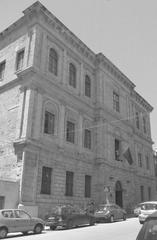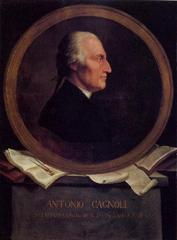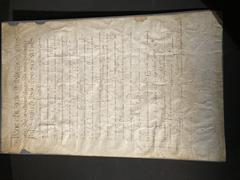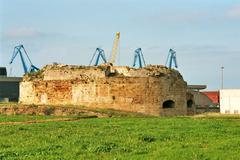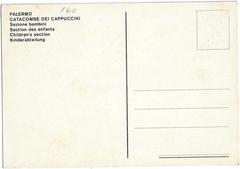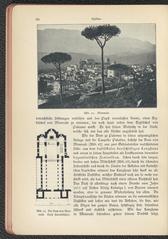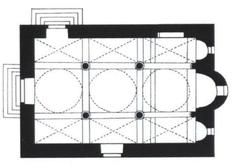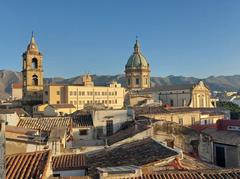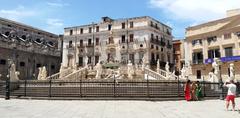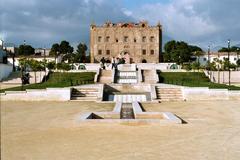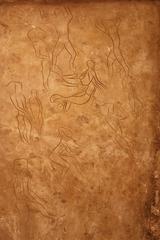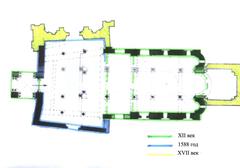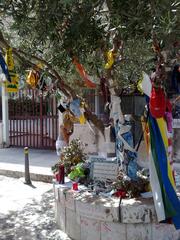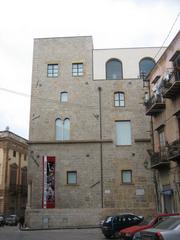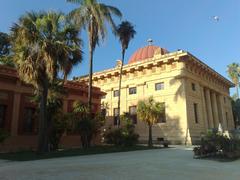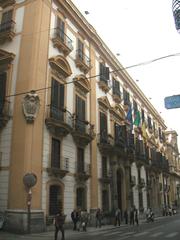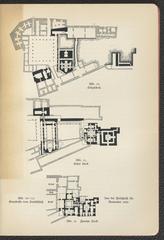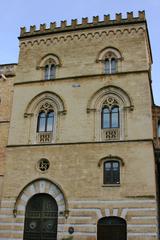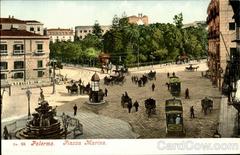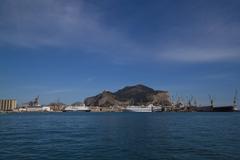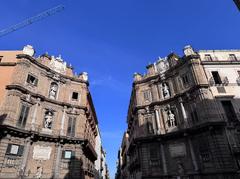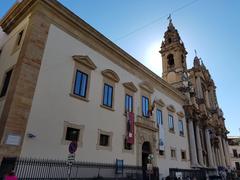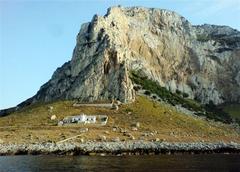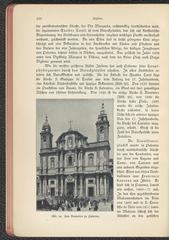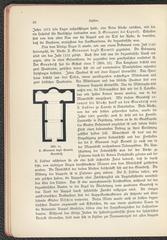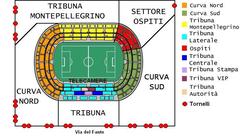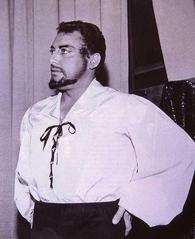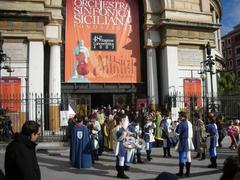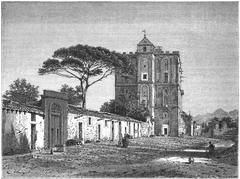
Santa Maria della Pietà Palermo: Visiting Hours, Tickets, and Historical Significance
Date: 04/07/2025
Introduction
Santa Maria della Pietà is a gem of Sicilian Baroque architecture, set in Palermo’s historic Kalsa district. Celebrated for its artistic treasures, rich cultural heritage, and ongoing religious significance, the church is both a place of worship and a living monument to Palermo’s layered history. This guide details everything you need to know for an enriching visit: from opening hours and ticketing details to artistic highlights, accessibility, and nearby attractions. Whether you are an art lover, history enthusiast, or a traveler seeking authentic Palermo experiences, Santa Maria della Pietà offers a profound encounter with the city’s spiritual and cultural legacy (PalermoViva).
Table of Contents
- Historical Overview
- Visiting Santa Maria della Pietà: Practical Information
- Preservation and Contemporary Relevance
- Visitor Experience and Tips
- Frequently Asked Questions (FAQ)
- Conclusion
- References
Historical Overview
Origins and Foundation
Santa Maria della Pietà was founded between 1678 and 1684 in the heart of Palermo’s Kalsa district, an area steeped in multicultural history. The church was commissioned by the Dominican Sisters during a period of urban and religious renewal, reflecting the Counter-Reformation’s drive to create inspiring spaces that would reaffirm Catholic faith and identity (Experience of Sicily). The Kalsa district itself, formerly the seat of Arab emirs, evolved into a center for Christian religious orders after the Norman conquest, embodying Palermo’s syncretic spirit.
Architectural Significance
Santa Maria della Pietà is a prime example of Sicilian Baroque style, characterized by its dramatic facade and harmonious proportions. The exterior features two orders of free-standing Corinthian columns and statues of saints, culminating in a statue of St. Dominic atop a globe. The use of local limestone and marble connects the church to Palermo’s natural landscape and architectural tradition (Wikipedia).
The interior follows a single nave plan, adorned with polychrome marble, elaborate stucco work by Procopio Serpotta and others, and luminous frescoes. Its vestibule, or sottocoro, welcomes visitors with dark Billiemi marble columns and intricate decorative motifs (Planaje).
Artistic Heritage
The church’s rich artistic program includes:
- Stucco Decorations: Masterpieces by Giacomo Serpotta, Procopio Serpotta, Niccolò Sanseverino, and Antonino Romano, featuring angels, floral garlands, and intricate reliefs.
- Frescoes: The 1722 cycle by Guglielmo Borremans, illustrating scenes from the life of the Virgin Mary, is a highlight for its vivid palette and narrative complexity.
- Altarpieces and Paintings: Works by Pietro dell’Aquila, Vincenzo da Pavia, and the Manno brothers, as well as 16th-century bas-reliefs attributed to Vincenzo and Antonello Gagini.
- Sculptures: Notable wooden statues of Santa Rosalia and the Immaculate Heart of Mary, venerated by the local community (Wikipedia IT).
Unique among Palermo churches are the 18 wrought-iron grilles (“gelosie”) in the nave, which once allowed cloistered Dominican nuns to observe services unseen.
Community and Religious Life
Santa Maria della Pietà remains an active parish, hosting regular liturgies, feast day processions, and community celebrations. Its role extends beyond the spiritual: the church was the baptismal site for anti-mafia judges Giovanni Falcone and Paolo Borsellino, linking it to contemporary civic identity and the ongoing struggle for justice in Sicily (Giornale di Sicilia). Restoration efforts, supported by local and national authorities, reinforce the church’s importance as a living center of faith and culture.
Visiting Santa Maria della Pietà: Practical Information
Visiting Hours
- Monday to Saturday: 9:00 AM – 1:00 PM and 3:00 PM – 6:00 PM
- Sunday: 9:00 AM – 12:00 PM (morning only)
Masses are held at 8:30 and 10:00 on Sundays and holidays, and at 18:00 on weekdays. Hours may vary during restoration or special events, so check ahead (PalermoViva).
Tickets and Admission
- Admission: Free; no tickets required.
- Donations: Gratefully accepted to support preservation.
- Special Events: Occasionally, special exhibitions or concerts may require a small fee.
Accessibility
- Mobility: The church is partially accessible, with ramps for visitors with reduced mobility, though some areas have steps or uneven flooring.
- Facilities: No restrooms inside; public facilities are available nearby.
Getting There
- Address: Via Torremuzza, 1 (corner of Via Alloro), Palermo, Italy
- Public Transport: Served by several bus lines; a 15-minute walk from Palermo Centrale railway station.
- By Foot: Easily reached from the city center; ideal for exploring the Kalsa district’s historic streets.
Guided Tours and Special Events
Guided tours are available by request through local tour operators or cultural organizations. The church frequently participates in Palermo’s citywide cultural initiatives, such as the Notte dei Musei (adventurebackpack.com). Check local listings or the Comune Palermo Turismo for up-to-date information.
Nearby Attractions
- Palazzo Abatellis: Regional Gallery of Sicily with medieval and Renaissance masterpieces.
- Santa Teresa alla Kalsa: Another Baroque church by Giacomo Amato.
- Oratorio delle Dame: Celebrated for Serpotta’s stucco decorations.
- Ballarò and Vucciria Markets: Vibrant local markets offering a taste of Palermo’s daily life.
- Botanical Garden: A peaceful retreat for nature lovers.
Preservation and Contemporary Relevance
Restoration of Santa Maria della Pietà is ongoing, focusing on structural integrity and the conservation of its priceless artworks. Recent projects, coordinated by the Fondo Edifici di Culto and the Ministry of the Interior, aim to secure the church’s cornices and stuccoes, ensuring safety and preserving Baroque craftsmanship for future generations (Giornale di Sicilia). These efforts are widely supported by the local community and reflect Palermo’s commitment to safeguarding its spiritual and cultural heritage.
Visitor Experience and Tips
- Best Time to Visit: Weekday afternoons are quietest. The church’s serene atmosphere is ideal for contemplation and art appreciation.
- Dress Code: Modest attire is required (shoulders and knees covered).
- Photography: Non-flash photography is allowed; please be respectful during services.
- Conduct: Maintain a respectful silence, as the church is an active place of worship.
Frequently Asked Questions (FAQ)
Q: What are the visiting hours for Santa Maria della Pietà?
A: Monday–Saturday: 9:00–13:00 and 15:00–18:00; Sunday: 9:00–12:00. Always check for latest updates.
Q: Is there a ticket or entrance fee?
A: No, entry is free; donations are welcome.
Q: Are guided tours available?
A: Private guides may be arranged; inquire locally or via Palermo tourism resources.
Q: Is the church accessible for visitors with disabilities?
A: Yes, though some areas have steps or uneven flooring.
Q: Can I take photos inside?
A: Yes, but without flash and with respect for ongoing worship.
Conclusion
Santa Maria della Pietà is more than a Baroque masterpiece; it is a beacon of Palermo’s enduring faith, artistic achievement, and civic pride. Its rich history, layered artistic program, and ongoing community role make it essential for anyone wishing to understand Palermo’s soul. Enjoy its tranquil beauty, marvel at its stuccoes and frescoes, and appreciate its place in the living tapestry of Sicilian heritage. Stay informed through official channels and consider using resources like the Audiala app to enrich your visit with guided audio tours and insider tips.
References
- Visiting Santa Maria Della Pietà in Palermo: Hours, Tickets, and Historical Insights, 2025
- Santa Maria Della Pietà: A Complete Visitor’s Guide to Palermo’s Historic Baroque Church, 2025
- Santa Maria della Pietà Palermo: Visiting Hours, Tickets & Baroque Architecture Guide, 2025
- Santa Maria della Pietà Visiting Hours, Tickets, and Guide to Palermo Historical Sites, 2025
- Restoration works on Santa Maria della Pietà, Giornale di Sicilia, 2025
- Official Palermo Tourism Board
- Comune Palermo Turismo
- Wikipedia
- Wikipedia IT


